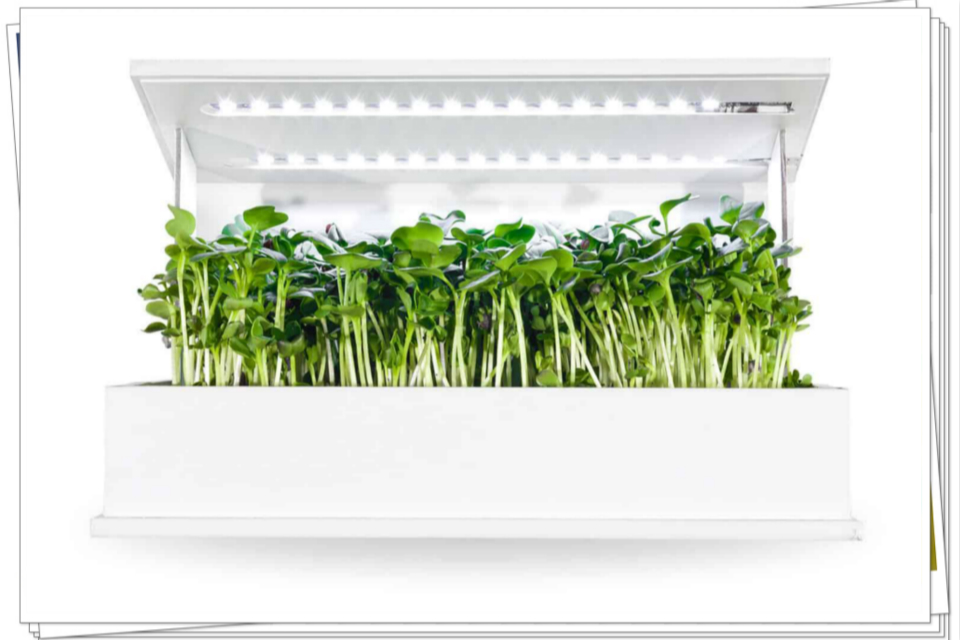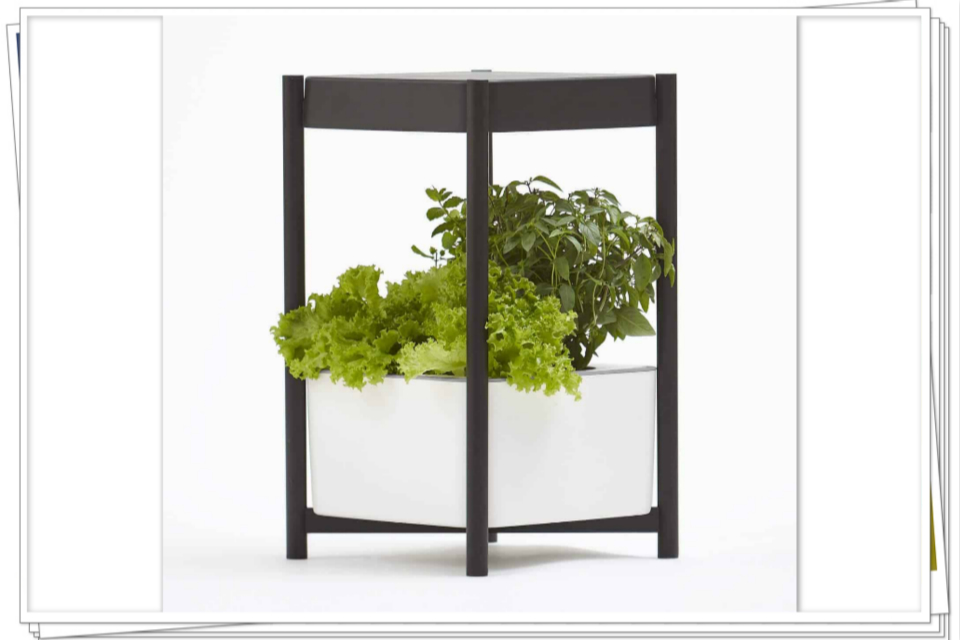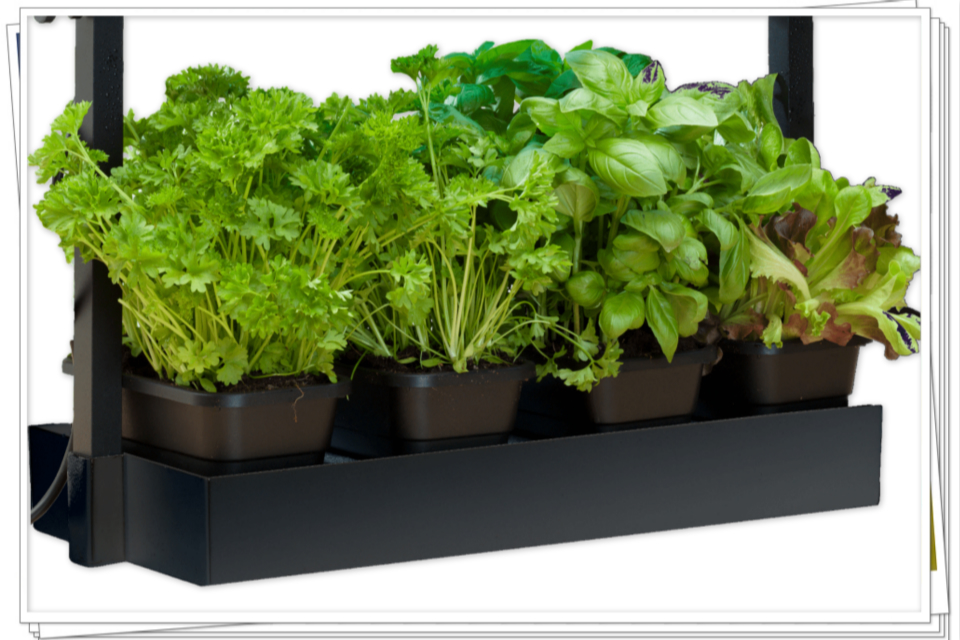Indoor vegetable garden, latest craze amongst gardeners.
“From COVID-19 to climate change to food security concerns, there are several factors accelerating megatrends shaping the indoor agriculture marketplace,” says Nancy Hallberg, Co-owner of Indoor Ag-Con.
Planting a vegetable garden during a pandemic definitely brought to mind the days of victory gardens and the comforting sense of triumph and self-sufficiency that I imagine they conferred.
Sick of being shut indoors? Get out and start planning that garden.
Can’t wait to live in a studio apartment, go hard on zero waste & sustainability, grow an indoor vegetable garden, have a minimalist interior & wardrobe, keep up with morning flows, hustle on weekdays, free dive on wknds.
Can you have an indoor vegetable garden?
Beginner’s Indoor Vegetable Garden: How do I begin? I don’t know where to start.
It is possible to have an indoor vegetable garden only if you mean on the indoors of a greenhouse.
Not so surprisingly, people are going rural these days, even in tiny apartments. The trend of indoor gardening and growing your own food is so popular, in fact.
Setting up an indoor herb garden can promote healthy and creative cooking and spruces up your interior! This whole journey is a giant game of trial and error; believe me when I say NONE of us were born with any knowledge we have about this stuff. We screwed up A FREAKING TON, but we learned and we planted again.
If you love gardening, you can still practice your craft during winter. take your time and enjoy the process. If you don’t see anything surface by the time your schedule says it should relax. Nature doesn’t really do deadlines.

An indoor garden will work very well for you.
Start Your Vegetable Garden Now. It’s never too early to start your vegetable garden – from the planning to buy seeds and supplies, to actually planting it, there’s plenty to be done, and getting a head start is a great idea. There are several things you can do now, even when the ground is frozen for the winter.
There are certain steps you need to take for your plants to grow healthy. The most critical step is to properly plant your plugs or seeds. The type of vegetables you plant is really up to you.
A small herb garden can yield basil, oregano, cilantro, mint, chives, and thyme all year round. For indoor vegetables, you can grow potatoes, carrots, radishes, and peppers easily if you have a spacious kit, the right soil, and can provide the right lighting and fertilizers to keep your edible plants in top shape.
For an indoor vegetable garden Easiest items to grow:
cherry tomatoes, don’t take as much energy (light and time) to harvest. peppers; I would get a smaller pepper. they have mini bell peppers; peas will most likely need a trellis to support the little buggers, lettuce-there are two types. one is to grow ahead of lettuce, where you harvest the whole head at one time, the other is a pick and pull variety, where you can harvest smaller amounts throughout the plant’s life cycle, as long as you leave the inner new leaves.
I’m not sure which place you are thinking to grow b/c indoor and outdoor were mentioned. But if your porch has direct sun I would try out there, free light and heat. Put your lettuce in more shade than your tomatoes and peppers and peas.
Indoor, you may need to purchase a grow lamp,T5 fluorescent grows lights has these available for purchase from a local retailer most likely.
All can be grown in their own 4″ pot. That will be better than attempting to create an indoor bed. However, the larger the pot you use, the larger the plant can get.
What is the cheapest way to eat healthily? To grow your own food!
You are not a farmer, and you even don’t live near a farm, but you want to be sure that food labels tell you the truth and nothing but the truth.
No big deal – plant your own vegetable garden!
It is a fantastic way to save money on groceries and consume 100% healthy food. Don’t have a backyard? No problem! You can start growing your own food right on your sunny windowsill.
How can I grow vegetables indoors without sunlight?
Sunlight can be replicated and that’s all you need to do to grow herbs and vegetables indoors, without relying on any sunlight.
When comparing lights, you need to consider their output in two terms — color and intensity. Plants respond in certain ways to certain color spectrums. Of course, daylight has it all, but artificial lighting sometimes only provides a limited spectrum, and varying degrees of intensity.
Vegetables and herbs can be grown indoors in two ways: on the windowsill using direct sunlight, or under grow lights. Fluorescent grow lights with a cooler t5 bulb are sufficient for small to medium-sized grow tents.

Once again, leafy veggies and herbs will do fine with less intense lighting, while anything larger than 12” will require a little more ‘oomph!’ For the cooler lights (fluorescents and LED) keep the light source about 4′′ above the top of the plant. Others will have to be at a greater distance away to prevent frying the plants.
T5 fluorescent grows lights do well for small indoor vegetable and herb gardens. These are ideal for small to medium-sized grow tents used in your home. If you plan on harvesting a lot more produce than your family can consume, perhaps by selling some at your local markets, a larger space and HID (High-Intensity Discharge) grow lamps would be better suited.
For full-spectrum grow lights, the number of light hours needed is higher. Generally, 12 to 16 hours per day under full-spectrum lighting. In all cases, they’ll need at least 8 hours of darkness, otherwise, the rate and effectiveness of the photosynthesis stage will be affected. Vegetables will need light for longer than herbs.
Pay attention to what the veggie’s needs are. For example, tomatoes and peppers need at least 6 hours of sun. But that would burn and bolt delicate lettuces. So gardeners who grow lettuces tend to do that in either early spring or fall or if they live in a cool shaded location, may plant them year-round.
What is the easiest vegetable to grow?
Best Vegetables to Grow in Winter
Onions and Shallots
Kale
Parsley
Garlic
Lettuce
Spinach
Peas
Carrots
Asparagus
Which crops should you start with? Modern Farmer has a good list, some of which I’ve shared below:
Greens: Lettuce, arugula, kale, and spinach grow well indoors but are best harvested as baby greens, before reaching maturity. Brian Barth writes for Modern Farmer, “Greens do not need supplemental light is located in a sunny, south-facing window. Otherwise, provide 10 to 12 hours of artificial light daily.”
Cherry tomatoes: These grow more readily than full-size tomatoes, although they need 16 hours of artificial light daily and temperatures that do not go below 65F (18C). Chili peppers do well under these same conditions.
Sprouts & Microgreens: Pick up a sprouting kit for an easy way to add a fresh crunch to your salads and sandwiches; the seeds germinate and grow quickly and do not require direct sunlight. Microgreens are sprouts grown in soil that have been allowed to grow a bit longer, to develop small leaves. Barth advises,
“Harvest once the first leaves emerge by cutting them with scissors just above the soil. Greens of all types are ideal for harvesting as microgreens, as are peas (that’s how you get pea shoots), and root crops, like turnips, beets, and radishes.”

Plants must be watered diligently because indoor air gets very dry in the wintertime. Check the soil and, if it feels dry to the touch, add some water.
If you’re growing tomatoes or peppers, you will have to aid with pollination, since there are (hopefully) no bees buzzing around your house. Peppers dislodge their pollen easily, so you can do this by dabbing the flowers with a cotton swab and transferring them to other flowers. With tomatoes, use an electric toothbrush simply to jiggle the flower and release pollen to encourage self-pollination.




